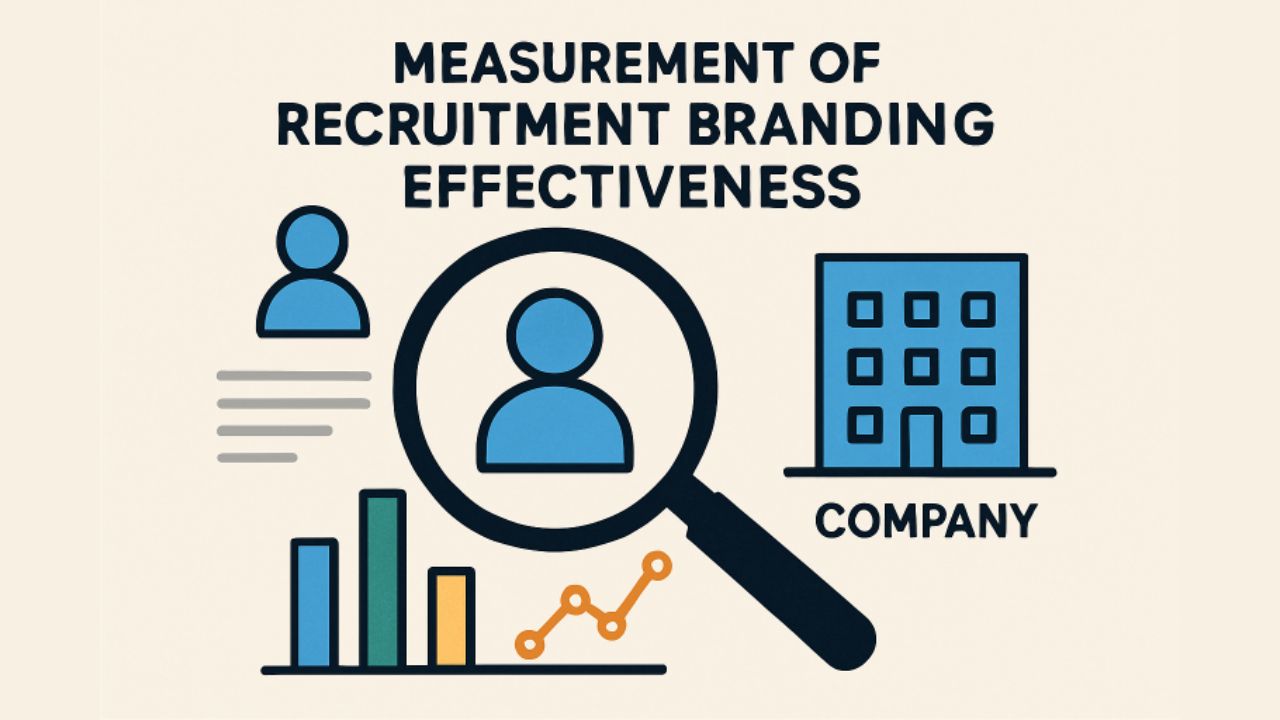- Recruitment branding directly influences hiring quality, cost, and efficiency.
- Tracking key metrics like time-to-fill, cost per hire, and offer acceptance rate provides measurable insight into branding effectiveness.
- Aligning recruitment branding goals with broader business objectives strengthens ROI visibility.
- Regular data analysis and strategic adjustments help sustain long-term recruitment success.
- A strong, data-backed employer brand attracts top talent and reinforces organizational reputation.
As the competition for top talent intensifies, companies increasingly recognize the importance of recruitment branding in their talent acquisition strategies. A strong recruitment branding strategy is crucial for attracting, engaging, and retaining high-quality candidates. However, quantifying the return on this investment often proves challenging for HR leaders and executives.
To effectively justify and optimize spending on recruitment branding, organizations must identify and track metrics that accurately reflect the impact on hiring outcomes. Focusing on the right data illuminates how recruitment branding initiatives translate into business value—from operational efficiency to improved workforce quality.
In this article, we explore the most essential metrics for measuring the ROI of recruitment branding, providing actionable strategies for implementation and highlighting how these insights can fuel ongoing improvements within your hiring processes.
Understanding the nuances and importance of each recruiting metric ensures that your recruitment branding efforts are working and enables HR teams to defend investments and make data-driven adjustments that yield meaningful organizational gains.
One of the most telling indicators of recruitment branding effectiveness is the quality of new hires. Organizations can assess this through performance metrics, manager satisfaction ratings, and retention rates. If your employer brand resonates with the ideal candidate profile, the outcome should be new hires who perform well, fit the culture, and remain with the company long-term. Improvements in quality of hire reflect the ability of your branding to attract people who drive business success, decrease turnover, and minimize the costs associated with failed hires.
The duration between posting a job vacancy and a candidate accepting an offer—known as time-to-fill—is a clear measure of recruitment efficiency. A strong employer brand draws more qualified applicants quickly, streamlining the recruitment funnel. When your organization is perceived as a desirable workplace, you spend less time searching for candidates and more time onboarding top talent, which can substantially lower your overall opportunity costs and administrative load.
This metric calculates the average cost incurred in hiring, factoring in expenses like advertising, recruiter fees, assessments, and onboarding. An engaging employer brand typically results in a larger pool of organically attracted candidates, reducing reliance on paid channels while boosting your hiring return on investment. Tracking cost per hire reveals financial efficiency and highlights which branding initiatives are delivering the greatest cost savings.
The percentage of job offers that candidates accept provides a valuable lens on how your employer branding is perceived in the market. High acceptance rates illustrate that your employee value proposition is compelling relative to competitors. Conversely, a low rate may indicate misalignment between candidate expectations and organizational reputation, prompting a review of your branding message and candidate experience.
An often-underrated measurement, employee referral rate reflects the proportion of new hires entering the company through current employee recommendations. When employees are enthusiastic about your organization, they become brand ambassadors—amplifying your reach and improving candidate quality. Monitoring referral rates gives insight into internal satisfaction and the authenticity of your recruitment branding.
The real value of recruitment branding cannot be measured in isolation but must be linked to broader business goals. Establish clear objectives for your branding initiatives—such as reducing turnover, improving diversity, or accelerating growth—and ensure that chosen metrics directly inform progress toward these outcomes. For example, if decreasing attrition is a priority, extra focus should be placed on the quality of hire and retention data.
Employing robust analytics platforms is essential for collecting, tracking, and interpreting recruitment metrics at scale. Technologies like applicant tracking systems, HRIS platforms, and dedicated analytics applications enable HR teams to visualize trends, identify bottlenecks, and make evidence-based decisions that drive ROI from branding efforts.
Recruitment branding is not a set-and-forget initiative. To remain competitive and ensure investments are paying off, organizations must continuously validate the effectiveness of their strategies. Regular reviews—quarterly or biannually—help to spot gaps, celebrate wins, and recalibrate campaigns according to the latest data. A commitment to ongoing improvement ensures that recruitment branding delivers increasing value year after year.
Measuring the ROI of recruitment branding requires a purposeful, data-driven mindset. By monitoring metrics such as quality of hire, time-to-fill, cost per hire, offer acceptance rate, and employee referral rate—and leveraging analytics tools and strategy reviews—organizations can confidently invest in, and iterate on, branding initiatives that consistently attract and retain exceptional talent.
You May Also Read: Money Matters: Borrowing Wisely Without Sacrificing Your Lifestyle

